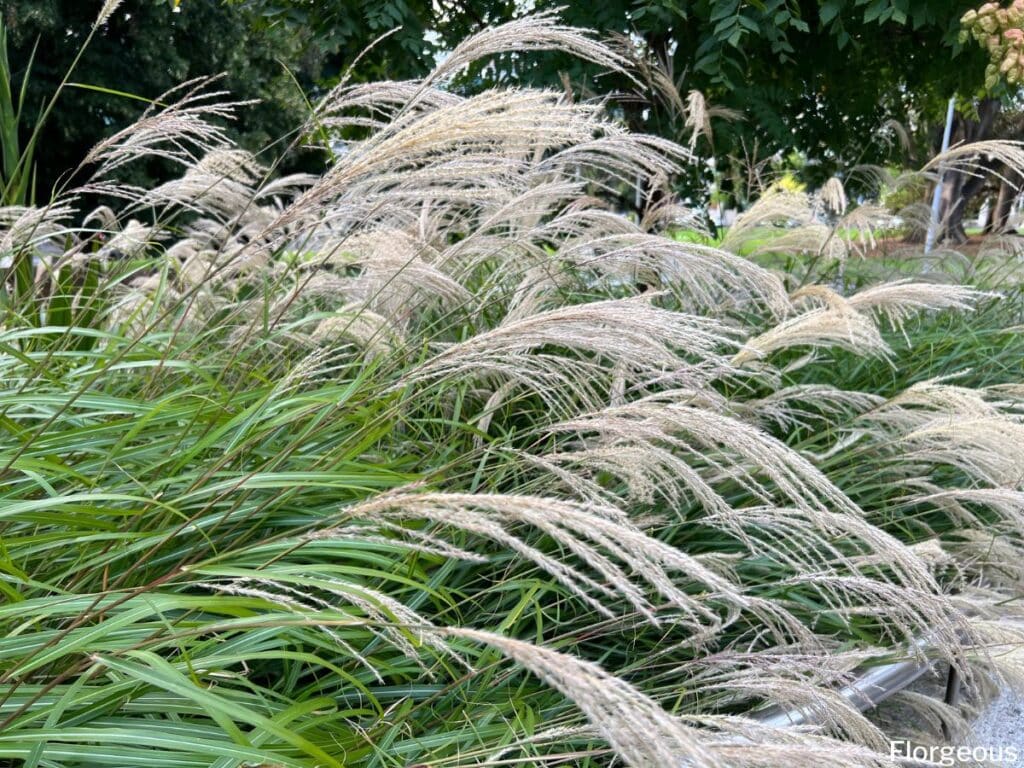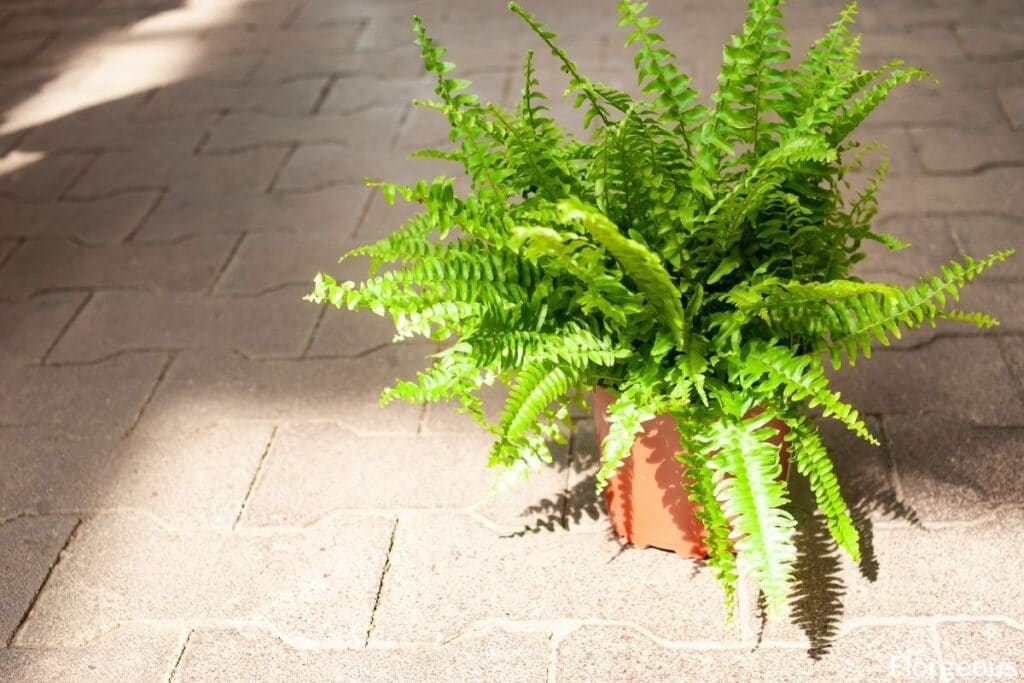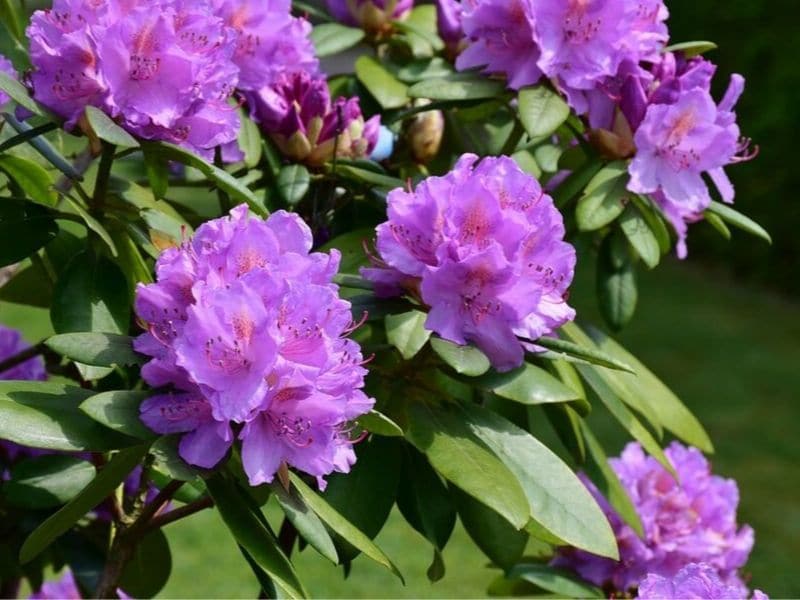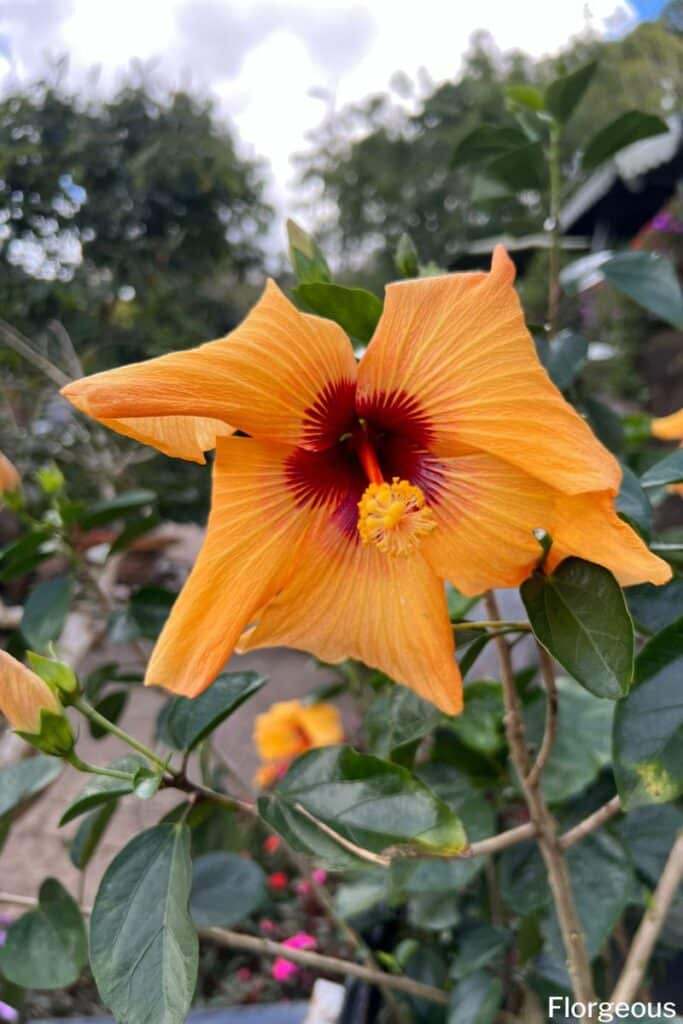Loropetalum (Loropetalum Chinense), also known as the Chinese fringe flower, is a member of the witch hazel family and a terrific shrub to include if you want to add contrast and color to your garden bed.
There are several varieties of this perennial shrub such as the blush, burgundy, Carolina midnight, dark fire, ever red, Jazz hands, purple diamond, purple pixie, and others. These small trees can differ quite a lot in foliage colors and bloom.
Some have dark purple leaves while others produce dark green leaves. Some varieties produce white flowers while others produce pink flower clusters.
Chinese fringe flowers can look wonderful as border plants and they can be trimmed into all sorts of shapes. The shrubs look their absolute best if you pair them with companion plants that will complement the contrasting foliage colors or add more texture to your garden bed.
Let’s take a look at some of the best plants to pair with fringe flowers.
What to Plant with Loropetalum
Fringe flowers will grow well alongside other plants that have a similar growing requirement. These plants and their companions grow best in free-draining soil that is rich in nutrients.
When it comes to loropetalum care, these shrubs need to be watered regularly and it can be planted in full sun to partial shade.
Let’s take a look at some plant varieties that also flourish in these conditions.
Ornamental Grasses

You can pair various types of ornamental grass species like Carex grass (Carex pendula), Golden Mop Cypress (Chamaecyparis pisifera), Karl Foerster grass (Calamagrotis x acutiflora), or Japanese forest grass(Hakonechloa macra), especially purple leaf loropetalum varieties.
The growing conditions of different varieties of ornamental grass can vary quite a bit. Some varieties like carex grass, golden mop cypress, and Karl Foerster should be planted in direct sun.
But you can pair other varieties like Japanese forest grass with Loropetalum in shaded areas since these varieties prefer a little bit more shade.
For optimal results, you should try to pair two contrasting plant species in the same garden bed. Japanese forest grass, for example, is a great purple pixie loropetalum companion plant because the vivid green grass blades will form a striking contrast next to the dark purple hue of these foundation plants.
Sunshine Ligustrum
Sunshine ligustrum (Ligustrum sinese) are great companion plants to grow alongside or in front of fringe flowers because the vivid yellow leaves of these other shrubs will create a striking contrast with the dark purple colors of your Loropetalum shrubs.
Ligustrums grow very well in well-drained soil and they can adapt to moist conditions but shouldn’t be planted in soggy conditions. These shrubs need a minimum of 6 hours of direct sunlight to grow well.
For a focal point in your garden, you can place loropetalums in the center with a row of shorter ligustrums around or in front of it. This will create a dark purple backdrop that can make the ligustrums stand out even more.
Ferns

Most species of fern (Tracheophyta) will grow well in the moist and nutrient-rich soil that Loropetalum shrubs like. Striking light green ferns like maidenhair fern (Adiantum pedatum), lady fern (Athyrium felix-femina), or royal fern (Osmunda regalis) will look especially good next to the dark purple foliage of loropetalum plants.
When you are pairing ferns with fringe flower plants, you should be careful to establish the ferns in partial shade. If you position these plants in full sun, their leaves will become scorched.
It is always best to pair shorter fern varieties in front of a tall shrub of loropetalum shrubs. This way the vivid green fern can stand out and add lots of texture to your garden bed.
Rhododendrons

Rhododendrons (Rhododendron) are terrific shrubs to include in your garden if you want to add some color.
There are many different varieties of this flowering shrub and they include flower colors like red, yellow, pink, purple, and white. Some varieties produce more flowers or larger flower clusters than others.
These loropetalum companion plants will grow well in dappled shade but shouldn’t be planted in deep shade. They should be planted in well-drained soil and need to be kept moist.
The shrubs can grow up to 6 feet tall depending on the variety while fringe flowers can grow up to 15 feet tall. Because of this height difference, it is best to plant rhododendrons in the front of your garden or to pair them with dwarf loropetalums.
Alternatively, you can also grow them next to one another to create borders and keep both plants trimmed.
Hibiscus

Hibiscus (Hibiscus rosa-sinesis) is another good companion to consider if you want to create a low-maintenance garden or if you want to add more flowers to your garden. These evergreen shrubs produce beautiful showy flowers in a huge variety of colors and will look rather vivid during the blooming season.
Hibiscus should be planted in direct sunlight or it won’t flower as much. In particularly hot regions, you can also establish it in dappled shade. The plant grows very well in moist free draining soil.
This flowering shrub can reach heights of up to eight feet tall. The best way to pair them with loropetalum plants is by growing them in front of these purple shrubs so those showy flowers will never be hidden from view.
What NOT to Plant with Loropatelum
Loropetalums can grow well in dappled shade but won’t grow too well if they are planted in deep shade areas. As such, they are not the best companion plants for tall trees. You should avoid establishing these plants underneath trees with a thick canopy.
It is also best not to grow this shrub with drought-tolerant plant species like blue fescue grass because it needs regular watering or it will wilt.
Final Thoughts
Loropetalum might not be the most common or popular plant but it is very useful for adding lots of contrast to your garden or for creating a solid background so all of your favorite plants can stand out brightly. This wonderful low-maintenance shrub will look rather striking next to a huge variety of other shrubs, ornamental grass varieties, ferns, rhododendrons, or hibiscus flowers.
We are quite certain that your garden will look appealing with any of these companion plants but keep an eye on our site if you want to learn more about other interesting ways to pair these other plants.







